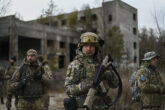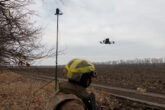December 02, 2016
Why the Trump Administration Should Adopt a Mission-Oriented Combatant Command Structure
It’s often said that to determine someone’s priorities, take a look at how they spend their time and their money. Organizations are no different. Glancing at an organizational chart does not just reveal reporting relationships – it depicts the organization’s focus. In the U.S. military, the combatant commands organize time (planning) and money (resources). They currently reflect an immediate post-Cold War institutional shift toward a regional orientation that does not match modern needs. Chairman Dunford argued this spring that future “conflicts are very quickly going to spread across multiple combatant commanders, geographic boundaries and functions” and the current planning process is muddled and does not prioritize threats. The Unified Command Plan (UCP) should be updated to reflect the priorities of the U.S. military by disbanding the geographic combatant commands and replacing them with mission-oriented commands.
Read the full article at The National Interest.
More from CNAS
-
Defense / Transatlantic Security
When Defense Becomes Destruction: Austria-Hungary’s Mistake and Ukraine’s RiskThis article was originally posted on War on the Rocks. The southeastern Polish city of Przemyśl, with its elegant 19th century Habsburg-era train station, remains one of the ...
By Franz-Stefan Gady
-
Defense / Transatlantic Security
Ukraine’s Catch-22 MomentThis article was originally published in the Financial Times. In Joseph Heller’s wartime classic, Catch-22, the protagonist Yossarian seeks out the US army surgeon Doc Daneeka...
By Franz-Stefan Gady
-
CNAS Insights | Budgetary Own Goals Undermine “Speed and Volume”
On November 7, Secretary of Defense Pete Hegseth laid out a plan to overhaul the Department of Defense’s (DOD’s) acquisition system. Placing an emphasis on delivering new capa...
By Philip Sheers, Carlton Haelig & Stacie Pettyjohn
-
Drones: Who Is Making the New Weapons of War?
From Ukraine and Russia to Gaza and Sudan, drones have become a key weapon of war. Which companies are making them, and profiting from this rapidly expanding but controversial...
By Stacie Pettyjohn




